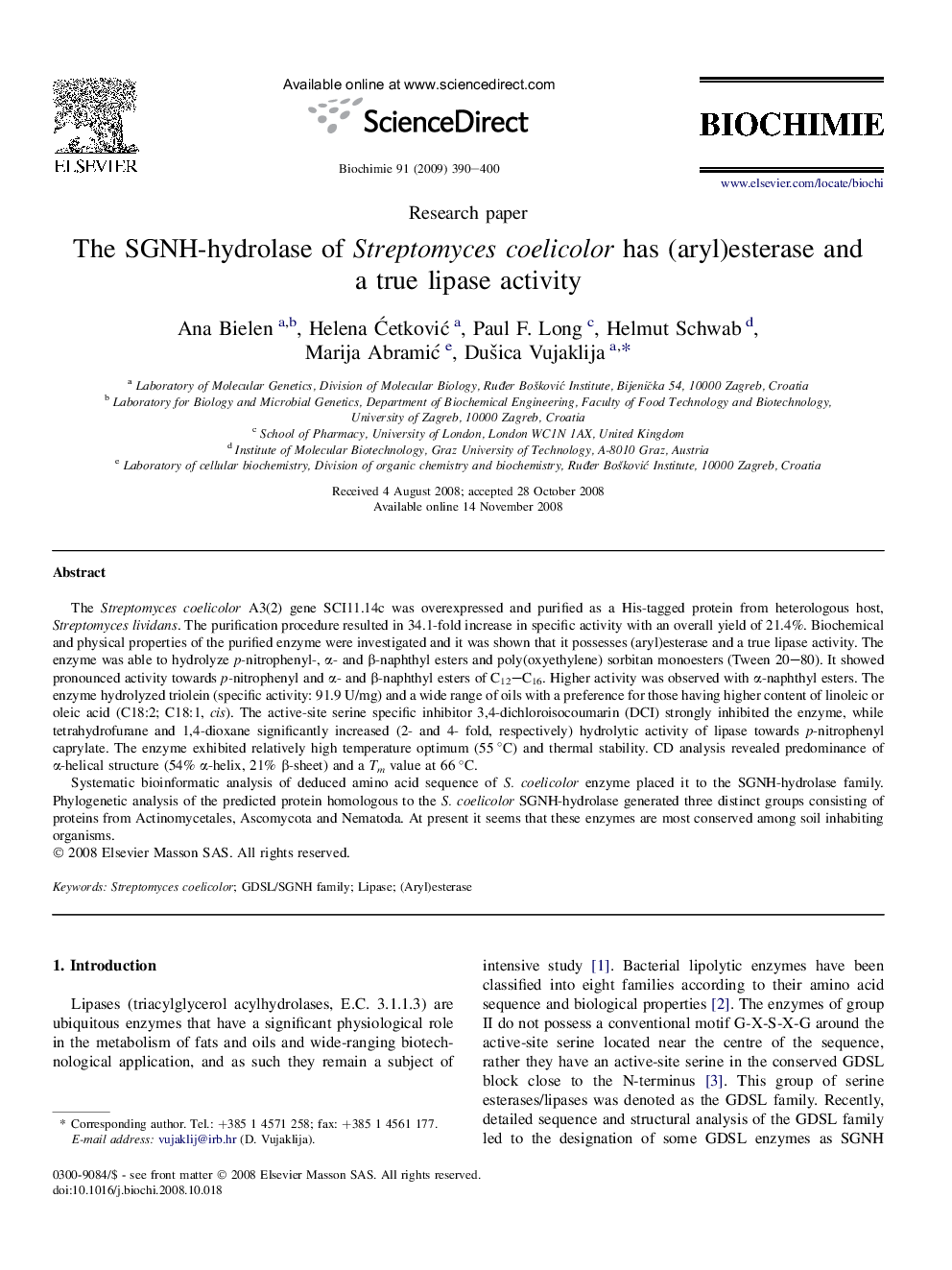| Article ID | Journal | Published Year | Pages | File Type |
|---|---|---|---|---|
| 1953172 | Biochimie | 2009 | 11 Pages |
The Streptomyces coelicolor A3(2) gene SCI11.14c was overexpressed and purified as a His-tagged protein from heterologous host, Streptomyces lividans. The purification procedure resulted in 34.1-fold increase in specific activity with an overall yield of 21.4%. Biochemical and physical properties of the purified enzyme were investigated and it was shown that it possesses (aryl)esterase and a true lipase activity. The enzyme was able to hydrolyze p-nitrophenyl-, α- and β-naphthyl esters and poly(oxyethylene) sorbitan monoesters (Tween 20–80). It showed pronounced activity towards p-nitrophenyl and α- and β-naphthyl esters of C12–C16. Higher activity was observed with α-naphthyl esters. The enzyme hydrolyzed triolein (specific activity: 91.9 U/mg) and a wide range of oils with a preference for those having higher content of linoleic or oleic acid (C18:2; C18:1, cis). The active-site serine specific inhibitor 3,4-dichloroisocoumarin (DCI) strongly inhibited the enzyme, while tetrahydrofurane and 1,4-dioxane significantly increased (2- and 4- fold, respectively) hydrolytic activity of lipase towards p-nitrophenyl caprylate. The enzyme exhibited relatively high temperature optimum (55 °C) and thermal stability. CD analysis revealed predominance of α-helical structure (54% α-helix, 21% β-sheet) and a Tm value at 66 °C.Systematic bioinformatic analysis of deduced amino acid sequence of S. coelicolor enzyme placed it to the SGNH-hydrolase family. Phylogenetic analysis of the predicted protein homologous to the S. coelicolor SGNH-hydrolase generated three distinct groups consisting of proteins from Actinomycetales, Ascomycota and Nematoda. At present it seems that these enzymes are most conserved among soil inhabiting organisms.
